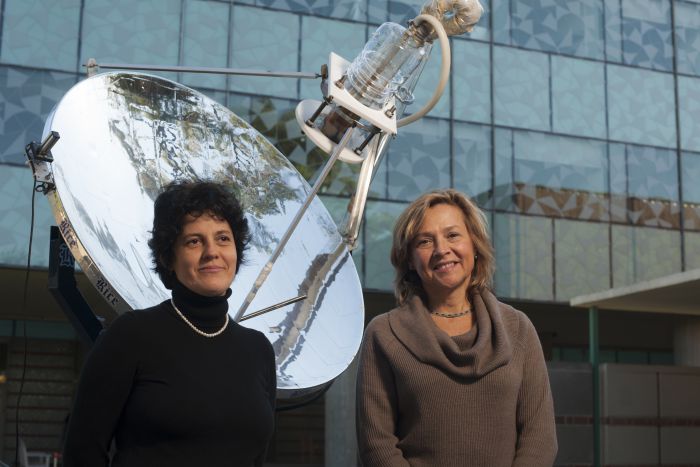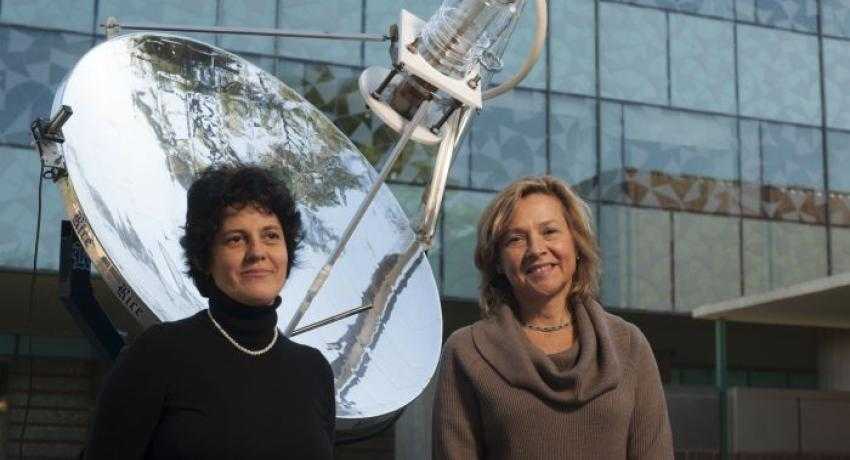Solar Used to Sterilize Medical Equipment in Developing Nations
 Last year, researchers at Rice University introduced prototypes of their solar-powered autoclaves. This year, they were amongst the keynote addresses at the opening of the 246th National Meeting & Exposition of the American Chemical Society (ACS), the world’s largest scientific society. Their revolutionary devices are able to convert water to steam at high enough temperatures to sterilize medical equipment. Since the technology doesn’t need external heat or power and is relatively small, even in prototype stages, it can be used in developing nations where ready access to autoclaves or clean medical equipment isn’t readily available.
Last year, researchers at Rice University introduced prototypes of their solar-powered autoclaves. This year, they were amongst the keynote addresses at the opening of the 246th National Meeting & Exposition of the American Chemical Society (ACS), the world’s largest scientific society. Their revolutionary devices are able to convert water to steam at high enough temperatures to sterilize medical equipment. Since the technology doesn’t need external heat or power and is relatively small, even in prototype stages, it can be used in developing nations where ready access to autoclaves or clean medical equipment isn’t readily available.
“We have developed a solution; our solar steam technology,” said Naomi Halas, Director of Rice’s Laboratory for Nanophotonics (LANP). “It is completely off-grid, uses sunlight as the energy source, is not that large, kills disease-causing microbes effectively and relatively quickly and is easy to operate. This is an incredibly promising technology.”
The solar-powered autoclaves use metallic nanoparticles - dubbed nanoheaters - that, when exposed to water, react to sunlight by heating up rapidly. “A layer of steam forms on the nanoheaters and buoys them up to the water’s surface. They release the steam and sink back down into the water to repeat the process,” according to ACS.
“Nanoheaters generate steam at a remarkably high efficiency,” Halas added. “More than 80 percent of the energy they absorb from sunlight goes into the production of steam.”
That’s different than heating up a container of water to convert it into steam, wherein all the water in the container must first boil before producing steam as bubbles. With nanoheaters, less than 20 percent of the energy heats the neighboring liquid.
At this point, Halas and colleagues have developed two working prototypes: one to sterilize medical and dental instruments and the other to disinfect human and animal wastes. ACS said the technology could also provide steam to purify dirty or salty water for drinking and cooking or to even spin small electric turbines to generate electricity.
Tests prove that the prototypes produce steam at temperatures ranging from 239 to 270 degrees Fahrenheit, with the devices reaching the sustained temperatures required by the U.S. Food and Drug Administration within about 5 minutes of being started.
“The heat and pressure produced by the steam was great enough to kill the most heat-resistant living microbes, as well as viruses and the tough spores that microbes form to survive hostile environmental conditions,” ACS said.
Halas has received funding for the research from the Bill and Melinda Gates Foundation, amongst many others, and recently formed a company to move the devices from the prototype stage to market. The team is also investigating how to make the technology more rugged and less costly.




